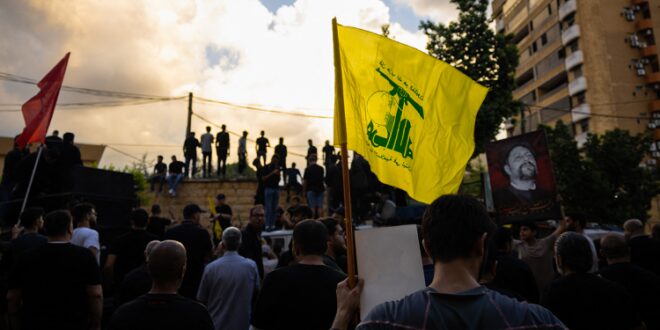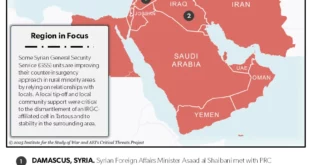In recent years, many Israelis, both regular citizens as well as policymakers, have concluded that a war with Hezbollah was necessary — perhaps inevitable — given the Lebanese militant group’s on-again, off-again missile strikes against Israel’s border communities. This perception only intensified after the Oct. 7, 2023, Hamas attacks, when Hezbollah Secretary-General Hassan Nasrallah announced that the Iran-backed group would continue to fire rockets at these communities until there is a cease-fire in Gaza. Immediately after Oct. 7, several top Israeli defense officials, including Defense Minister Yoav Gallant, advocated attacking Hezbollah immediately and were only dissuaded by heavy US pressure, as well as the two carrier strike groups President Joe Biden ordered into the region.
In recent days, the conflict between Israel and Hezbollah has entered a precarious new phase, with Israel deploying its intelligence capabilities in the successive pager and walkie-talkie attacks that injured thousands of Lebanese, most presumably affiliated with Hezbollah, and seriously disrupting its operations and communications capabilities. Israel followed this up with a strike on most of the leadership of the elite Radwan Forces and attacks on Hezbollah’s missile launchers and other military sites. The Lebanese militant group vowed to retaliate, of course, and upped the ante by striking beyond its usual limits, reaching into the heavily populated suburbs of Haifa.
Israel’s strategy can be viewed through two separate lenses. One is, of course, policy, with the aim of ending Hezbollah’s attacks and, to the extent possible, limiting its political and military power, forcing it back 29 kilometers to the Litani River, or even disarming it, as stipulated in the United Nations Security Council Resolution 1701, which ended the 2006 Israel-Hezbollah war. The last two goals are highly unlikely to be achieved, as there is no force in Lebanon that could compel Hezbollah to comply, and it can be assumed that Iran is already moving to shore up its strength.
Of course, the simplest way to end the Hezbollah attacks is to conclude a cease-fire in Gaza, as urged tirelessly by the United States and its regional partners, in return for which Hamas would release the remaining Israeli hostages. Despite considerable support among Israeli policymakers and much of the public, this option appears to have been rejected by Israeli Prime Minister Benjamin Netanyahu, presumably at the behest of his hawkish coalition partners, Itamar Ben-Gvir and Bezalel Smotrich, who credibly threaten to bring down the current government if a cease-fire is concluded.
It is highly likely that Hezbollah would halt its rocket fire immediately after a cease-fire agreement is reached, as it could claim a win and stop the escalation on its own front. But for now, no deal seems possible. Netanyahu knows that much (but not all) of the support for a cease-fire/hostage release comes from his political enemies, whose main goal, besides freeing the hostages, is to topple the current government. Thus, Netanyahu’s political survival dictates no cease-fire and a turn to the north.
Many have interpreted Israel’s actions as deliberately intended to provoke Hezbollah into a full-scale war, which Israel would almost certainly “win,” although it would likely destroy large parts of Lebanon’s infrastructure and undoubtedly suffer more severe losses of its own than in any war since 1948. However, there are many possible steps between what became the post-Oct. 7 status quo and full-scale war, and Israel has taken a number of those steps with far more strategic sagacity than it has displayed in Gaza. Though some have speculated that an Israeli ground invasion could be in the offing, Israel’s previous experiences with boots on the ground in Lebanon will likely prevent that.
Thus, the pager and walkie-talkie attacks on Sept. 18 and 19, which have been compared to Israel’s destruction of the Egyptian air force in the initial hours of the 1967 Arab-Israeli war, opened a new phase, as Gallant said in so many words. The communications attacks were effective as well as spectacular. They seriously impacted Hezbollah’s ability to strike Israel in the short and medium term by injuring many of its forces and destroying its communications capability. Meanwhile, Israel has been killing the group’s senior leaders and destroying its missile positions with comparative impunity. Hezbollah’s strikes, though widening its field of operations, have done Israel little damage, but they have allowed it to claim escalation by Hezbollah and thus expand the scope of its own more effective attacks.
On the political level, most Israelis have long supported attacking Hezbollah. In late August, “67 percent of Jewish respondents thought Israel should intensify its response to Hezbollah.” Israelis are very conscious of the 60,000-80,000 citizens displaced from their homes near the Lebanese border. Unlike those near the Gaza border, many of these belong to Netanyahu’s political base. But the anger at the situation is very widespread. Netanyahu, at least so far, has successfully pivoted from a focus on Gaza to one on Hezbollah, despite apparently leaving the hostages to their fate. This was certainly helped by the deftness and skillfulness displayed in the recent attacks on Hezbollah, something always appreciated by the Israeli public. This may even help to somewhat dim the anger and bewilderment of Israelis at the intelligence, military, and political failures that led to the Oct. 7 debacle.
Theoretically, escalation could proceed to all-out war, with both sides throwing their considerable arsenals at each other. However, Israel’s generals, who mostly appear to support the new focus on Hezbollah, appear to be betting that Iranian and Hezbollah leaders will accept humiliation and short-term defeat in return for retaining their men and materiel and sparing Lebanon from an Israeli onslaught, which might well diminish their own political power. Lebanon is in appalling economic and political straits; most Lebanese, despite their sympathy for Gaza, oppose a war that would devastate the country.
On another level, both sides are battling to achieve the all-important but intangible goal of establishing deterrence. Israel desperately wants to restore its image as a clever, seemingly omnipotent and omniscient actor that it gained in the 1967 war and retained, even if in somewhat tattered form, until Oct. 7. Hezbollah and its patron Iran want to maintain the former’s status as the preeminent power in Lebanon and ensure it remains a deterrent to any Israeli thoughts of striking Iran. The latter can only be used once, which is a large part of why Tehran has clearly signaled it wants no wider war at this time.
The Israeli assumption seems to be that, in contrast to Hamas, Hezbollah can be tamed without being destroyed. If Netanyahu can neutralize Hezbollah so that displaced Israelis can return to their homes in the north, then he may regain some of the luster — at least among half of the population — that he lost on Oct. 7. It is a gamble; a full-scale war could emerge any day.
Of course, the calculation is risky, to say the least. Hezbollah may well not follow the Israeli script, in which case at least half of Israel could feel the impact of its missiles. That may become apparent in the days and weeks ahead.
 Eurasia Press & News
Eurasia Press & News



